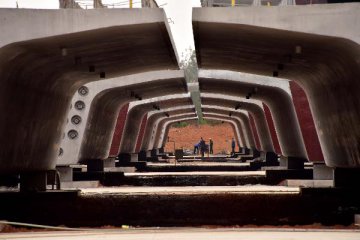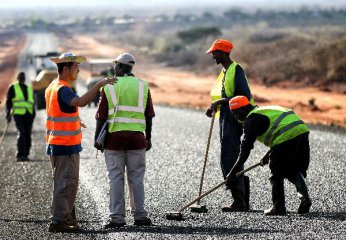Chinese telecommunication giant Huawei said Thursday it has won a major railway contract to build a train-to-ground communications solution fully integrated with train signal systems for Kenya's Mombasa-Nairobi railway line.
In a statement received in Nairobi, Huawei said it will provide the GSM-R dispatching communications network as well as backbone optical transmission network, clock and synchronization system, and power and environment monitoring system to the region.
"After completion, the Mombasa-Nairobi railway line's GSM-R network will carry multiple communications tasks, including mission-critical train dispatch, emergency communications, section maintenance communications, and transmission of train control data along the entire line," the statement said.
Huawei was awarded this project with its industry-leading wireless solution R&D capability in railway communications, which enables it to provide end-to-end highly reliable railway operational communications solutions to help Kenya address the challenges it faces during the Mombasa-Nairobi railway operation.
The firm said the network will meet the customer requirements for safe, stable, efficient, and reliable railway operations, increase both the passenger and freight capacity of the Mombasa-Nairobi railway line, promote regional economic growth, and bring East African economies closer to each other.
China Road and Bridge Corporation (CRBC) is currently constructing the 472-kilometer-long Standard Gauge Railway (SGR) from Mombasa to Nairobi to replace the existing railway line that is over 100 years old.
According to the timetable of the owner of the Mombasa-Nairobi railway line, the entire project will be completed in June 2017. The latest contract is the first time that Huawei's railway operational communications solution has been applied in East Africa region.
Before winning this major and complicated project that involves multiple communications systems, Huawei has been awarded contracts to provide similar services for a number of projects on the African continent, including a light rail project in Ethiopia, the Chingola-Livingstone railway project in Zambia, and the PRASA GSM-R project in South Africa.
As the first new line that has been constructed by Kenya for the past century, the Mombasa-Nairobi line which begun in 2013 has a pivotal role in East Africa's railway network. The line runs across Kenya's territory from the southeast to the northwest, starting from Mombasa, the biggest port along the east coastline of Africa, to Nairobi, Kenya's capital and the largest city in East Africa.
The Mombasa-Nairobi railway line is the starting point of East Africa's railway network and has a designed freight capacity of 25 million tonnes. With a total investment of 3.8 billion U.S. dollars, the Mombasa-Nairobi railway line adopts the Chinese Railway Level 1 standards, and is a flagship project under the Kenya Vision 2030 development agenda, connecting Kenya's coastal area to East Africa's inland.
"As a system that implements mission-critical tasks such as train dispatching, data transmission, and information exchange, the railway operational communications system has exceptionally high requirements on security and reliability," Huawei said.
The Chinese firm said it will provide the customer a railway operational communications solution that features the most comprehensive redundancy design in the industry across all network elements, coupled with multiple Huawei technologies and protection mechanisms, and ensuring full communications system availability through optimized system fault detection and isolation measures.
As part of the contract, Huawei's premium power supply solution and Uninterruptible Power Supply (UPS) products that feature security, reliability, economy, and operability will be deployed.
The solution and products meet the customer's requirements on backup power and provide highly reliable power supplies for communications systems, data centres, and security systems along the entire railway line.






















Latest comments